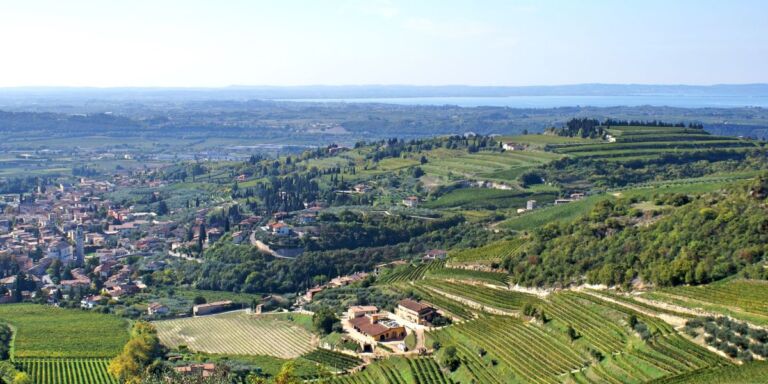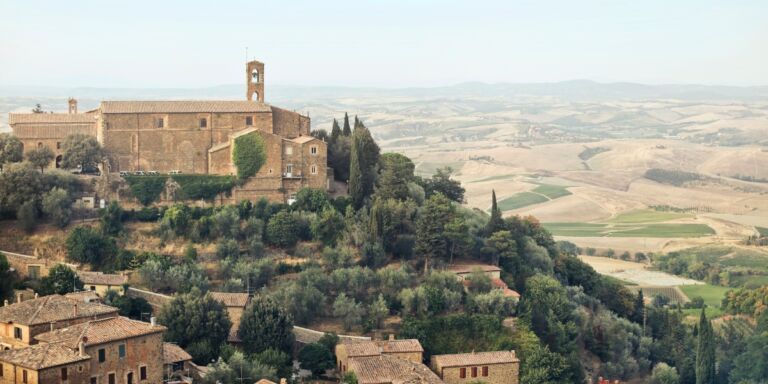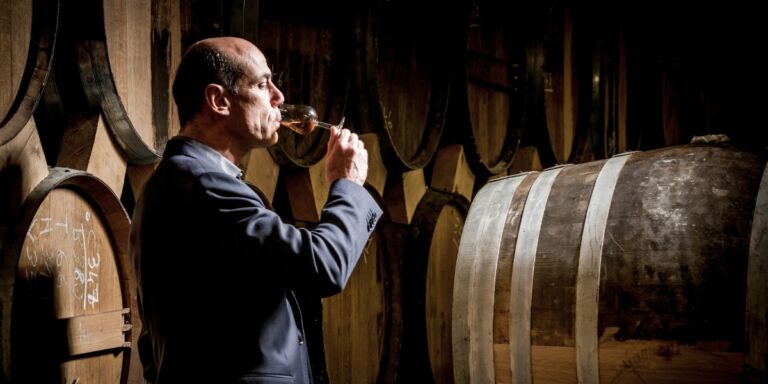When Jonatan García Lima’s father announced that they were going to start making their own wine instead of selling their grapes, little did they know that Suertes del Marqués, the Canarian winery they founded in 2006 in Tenerife, would soon be producing some of Spain’s most sought-after wines.
García Lima has devoted his career to the winery, making over a dozen different wines in La Orotava Valley, one of the island’s five appellations. After extensive recent renovations, the winery has now doubled in size. They currently make wine from around 26 hectares, 11 of which they own, and 15 of which are purchased from partner wine growers.
García Lima is one of a new generation of Canarian winemakers intent on preserving the island’s ancient vine heritage: the vineyards he works with are vertiginous and the vines, ungrafted and pre-phylloxera, are up to 250 years old, with an average age of 100. According to IWSC judge Greg Sherwood MW, “the winery can honestly claim to have put premium Tenerife wines on the UK and global fine wine map in the late 2000s.”
Suertes del Marques currently makes three levels of wine. The village wines – 7 Fuentes, El Lance, Medianías and Trenzado – come from a variety of different vineyards around the island; single vineyard wines come exclusively from Finca El Esquilón and include La Solana, Candio, El Esquilón, El Ciruelo, Los Pasitos and Vidonia. Then there are special vinifications: Suertes del Marqués Blanco Dulce (Sweet White) and Suertes del Marqués Tinto Dulce (Sweet Red).

How did you start to get interested in the world of wine?
We had vineyards and sold the grapes, but I was a factory manager and had no professional interest. In 2005, my father decided to start making our own wine. That’s when I became more and more interested, initially out of necessity because I wanted to do things well, but wine hooks you in such a way that in the end it becomes your passion and obsession. I left my job to devote myself completely to wine.
We were selling in the south of Tenerife and it felt like it was an export
When you founded your Tenerife winery, were you looking for international success?
Not at all. We started with the idea of making a good wine to be proud of – our expectation was to sell it here on the island. It might sound funny, but we were selling it in the south of Tenerife and it felt like it was an export.
What is the founding philosophy of the winery?
We started by vinifying like everyone else here, a dry white, a semi-dry white, and a young red wine and another with some oak. Then you see that this island has incredible potential to differentiate the same grape variety in different types of soil, orientations, heights… In 2008 we began to vinify the plots separately so that the terroir would be able to express itself.

Which native grape varieties do you have?
In reds we have Listán Negro, Castellana Negra, Vijariego Negro, Baboso Negro, and Malvasía Rosada. Our smaller varieties include Negramoll.
In whites, Listán Blanco and Torrontés are the main ones. I have also planted more varieties – Marmajuelo, Albillo Criollo – but they are a minority.
Interested in Spanish wines? Read more here:
Tell us about the process of making your wines.
For the red wines, I mostly work with whole bunches. It’s very important that the terroir shows more than the method, so all white wines are vinified in the same way – fermenting in wood, de-stemming, then pressing – and moved to either 500-litre barrels or to the foudres. We vinify plots separately but they all get the same treatment so the terroir is allowed to express itself.
How old are Suertes del Marqué vines?
We have an area that is dated between 200 and 250 years, but the average age of vines in the Orotava Valley is 100 years.
Has the price of the vineyards increased?
In Spain, there has been a lot of speculation with land prices, but I believe that it has not gone up – some land may be cheaper than in 2005 for example. However, the land here is still very expensive. The average price in La Orotava is between €15 and €30 per square metre. At that price, unless you sell your wine at ultra-premium prices, it’s very hard to be profitable.

You export 90% of your wine abroad. Are you seeing more international interest in the wines from Tenerife?
Ten years ago, it was very difficult to sell Canarian wine. But improved communications, improved vinification, our old pre-phylloxera vineyards and our unique vine training system which we call cordón trenzado (whereby the vines’ shoots are braided together in a horizontal plait) is all getting much more interest outside than inside from sommeliers, journalists and wine professionals. They have realised the potential here in terms of terroir and our local grape varieties.
Why is it so important for the winery to protect the “cordón trenzado” training system?
It is a worldwide wine heritage; the cordón trenzado is a system that you do not find anywhere else. The system is of unknown origin, but it has been present here for centuries so is necessary for preserving our tradition.
Are you afraid that volcanic wines might be a fad?
Yes, I think that volcanic wines could be a trend, and that is why we are trying to become a classic winery instead of just making fashionable wines. Rather than saying that our wines are volcanic, pre-phylloxera, it is important to put the name of the winery first.
Is the Canarian wine tradition known outside the islands?
I don’t think so. Luckily, it is becoming more and more known, but we still have a long way to go. I think there is a story that has not been communicated well, and that is of the more than 300 years that Canarian wine has been sold abroad. We’re beginning to get the story across, but more communication is needed.






